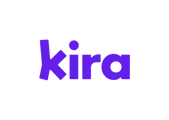Flexible Scheduling and Learning Models for Kira Learning's Computer Science Courses
Kira Courses in Schools with Different Schedules
Kira Learning offers courses of different lengths. Our middle school course, Intro to Computational Thinking and Programming, has three units and requires about 25 hours of class time for students to work through. Some schools successfully teach this course by scheduling their computer science classes every day for one grading period, around six weeks. Other schools use an A/B day schedule and schedule their CS class to meet every other day for a whole semester. Other middle schools schedule their classes to meet only once a week, for an extended period of time.
Our Intro to Computer Science (Python) course for high school students is designed to take around 150 hours of class time, and is generally scheduled for a full year. There is generally less variation in scheduling models for this full-year course, but classes can meet on an A/B day schedule, or for extended block class sessions that meet fewer times per week, or have the course finish in one semester.
Self-Paced vs. Whole-Class Paced Classes
Most schools who use Kira courses have teachers guiding the students through daily lessons, and keeping students generally on the same pace working through the course. Many teachers watch all the videos as a whole class together on the big screen in the classroom.
We also provide a content-locking option for teachers in the section settings to ensure that each student completes the required work on each step, or lesson, or unit, before moving on to the next one.
To help keep students generally moving at the same pace as the rest of the class in this model, teachers can have students work in groups, helping each other out with coding activities and study sessions before lesson assessments. Usage of the Kira AI Tutor is also helpful in keeping students moving along at a common pace, because our AI Tutor helps students from getting stuck for too long on a coding exercise, offering them personalized tips on how to move forward toward the solution.
With this approach of keeping the whole class moving at the same pace, teachers use Kira-provided lesson slides or lesson plans that include unplugged activities that reinforce student understanding of the learning goals they are working on in the online course content. So teachers spend some time on whole-class instruction and teacher-led learning activities, and then another portion of each class period working in the online Kira platform.
A less common but feasible approach to pacing is where students are allowed to work at their own pace through the course. In this model, teachers do not offer much whole-class instruction, and students primarily use the Kira course content for all of their learning activities. The course generally will take less overall hours for the class in this model, but there are fewer supports offered to students to ensure that they all master the desired learning outcomes.
